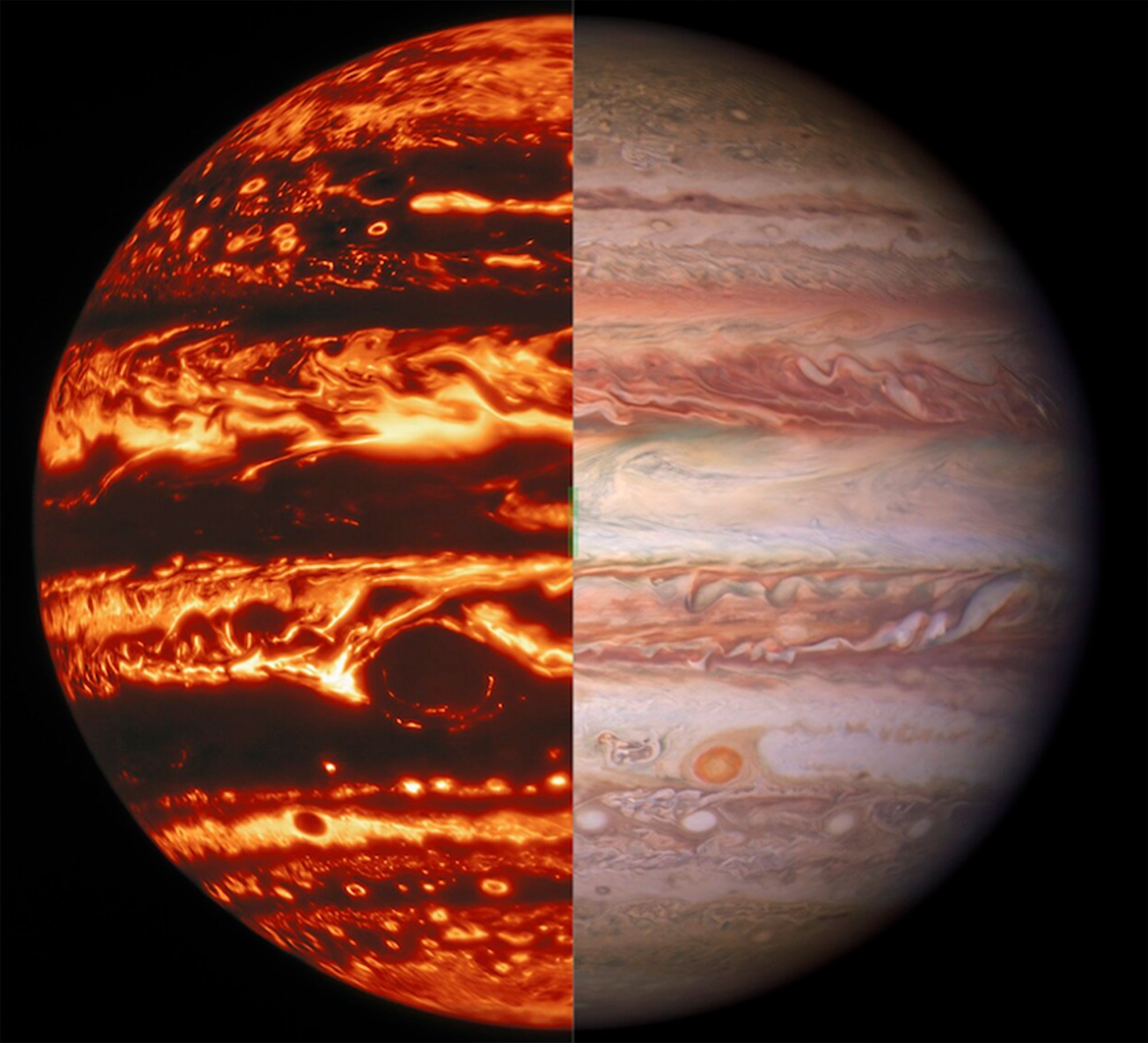Jupiter's monster storm not just wide but surprisingly deep
Jupiter's Great Red Spot, a storm so big it could swallow Earth, extends surprisingly deep beneath the planet's cloud tops

Your support helps us to tell the story
From reproductive rights to climate change to Big Tech, The Independent is on the ground when the story is developing. Whether it's investigating the financials of Elon Musk's pro-Trump PAC or producing our latest documentary, 'The A Word', which shines a light on the American women fighting for reproductive rights, we know how important it is to parse out the facts from the messaging.
At such a critical moment in US history, we need reporters on the ground. Your donation allows us to keep sending journalists to speak to both sides of the story.
The Independent is trusted by Americans across the entire political spectrum. And unlike many other quality news outlets, we choose not to lock Americans out of our reporting and analysis with paywalls. We believe quality journalism should be available to everyone, paid for by those who can afford it.
Your support makes all the difference.Jupiter’s Great Red Spot, a storm so big it could swallow Earth extends surprisingly deep beneath the planet’s cloud tops, scientists reported Thursday.
NASA’s Juno spacecraft has discovered that the monster storm, though shrinking, still has a depth of between 200 miles (350 kilometers) and 300 miles or so (500 kilometers.) When combined with its width of 10,000 miles (16,000 kilometers), the Great Red Spot resembles a fat pancake in new 3D images of the planet.
The mission's lead scientist, Scott Bolton of Southwest Research Institute, said there might not be a hard cutoff at the bottom of the storm.
“It probably fades out gradually and keeps going down," Bolton said at a news conference.
The research was published Thursday in the journal Science.
The Great Red Spot is probably the tallest Jovian storm measured so far with Juno's microwave and gravity-mapping instruments, Bolton said. Thousands of storms rage across the gas giant at any given time — beautiful and colorful swirls, plumes and filaments covering the entire planet, as seen by the spacecraft's camera.
Still ahead for Juno: measuring the depth of the polar cyclones, which might penetrate even deeper beneath the clouds.
“I wouldn't want to be too quick to guess that we've seen the deepest," Bolton told reporters. "But the Great Red Spot is the largest and that makes it special by itself, and you might expect that it might be deeper just because of that.”
By contrast, some of the surrounding jet streams extend an estimated 2,000 miles (3,200 kilometers) into Jupiter
Launched in 2011, Juno has been orbiting the solar system’s largest planet since 2016. NASA recently extended the mission by another four years, to 2025.
___
The Associated Press Health and Science Department receives support from the Howard Hughes Medical Institute’s Department of Science Education. The AP is solely responsible for all content.